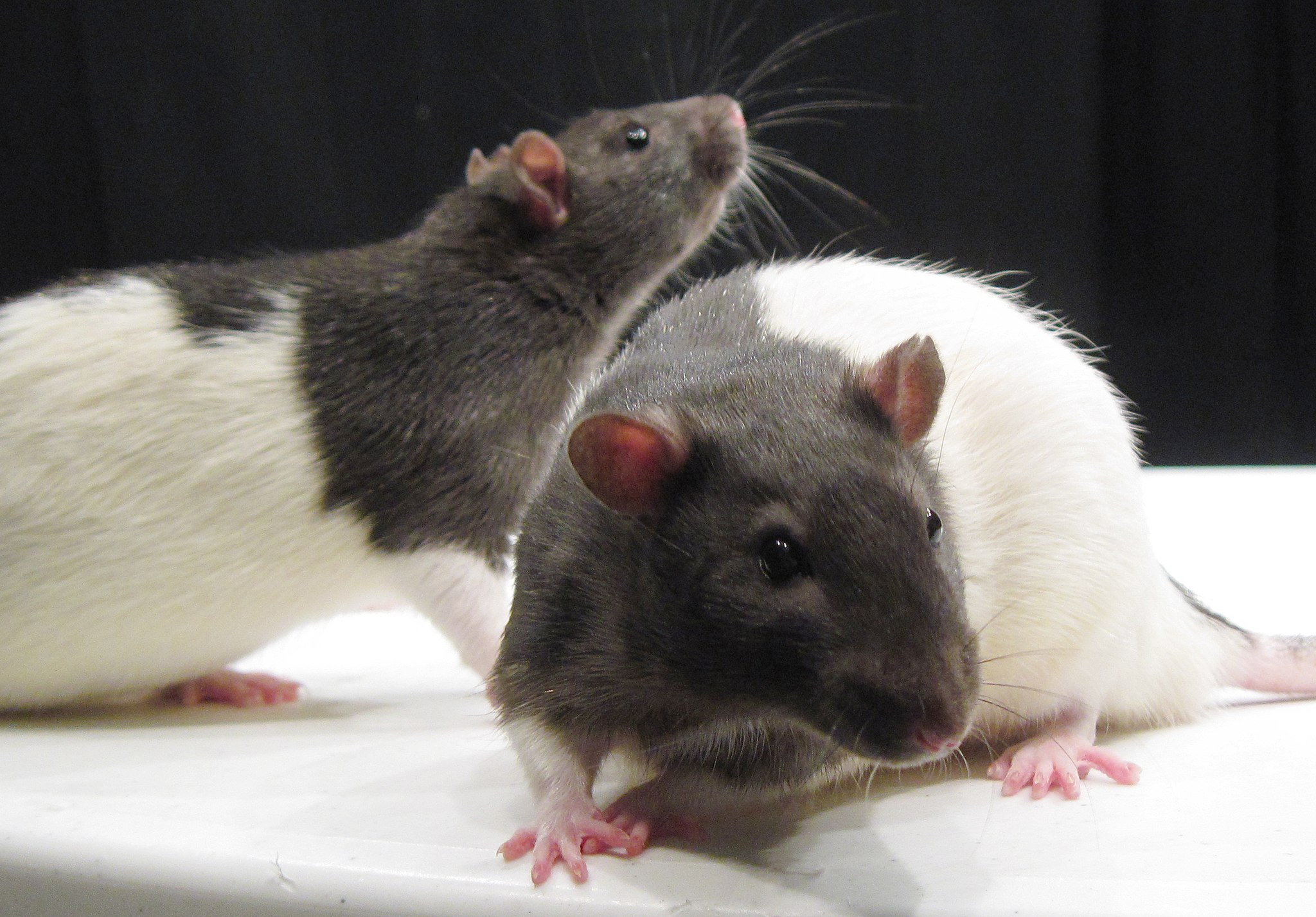Rats love hide and seek
Studying play in animals could allow scientists to answer important questions about decision making, social behavior, and even theory of mind.
Anna Marchenkova in Wikimedia Commons
In general, neuroscientists consider anthropomorphizing animal behavior to be a faux pas. But increasing evidence indicates that many human behaviors can be observed in other animals, if only in a rudimentary form. Well-known to many people who keep rats as pets is their ability to play. Recently, researchers in Germany published a study on play behavior in rats, specifically the game hide-and-seek. This game may seem relatively simple, but requires complex behaviors including decision-making and perspective-taking.

A pair of black and white rats
Jason Snyder on Wikimedia Commons
Fascinatingly, rats were able to learn to be both hiders and seekers. The game began when rats were placed in a box. If the box was open, the rats learned that this meant they were supposed to go and hide. The rats were able to strategize hiding location and showed a preference for an opaque box hiding place rather than a clear box. If the lid was initially closed, the rats learned that this meant they had to go and find the experimenter.
The experimenter would pet and tickle the rat at the end of the trial. In many tasks used in modern neuroscience, food is used as a reward, but in this study, the social interaction and the "fun" of the activity were enough to motivate the rats to learn this complex behavior. Further supporting this, the researcher saw that rats were having “fun” as evidenced by excitement behaviors such as freudensprung (“joy jumps”), and rats re-hiding after being found.
To understand underlying processes of this, electrical signals were recorded from the prefrontal cortex, a brain region involved in learning and social behavior. These recordings showed a subset of cells were activated during play and specifically when the box was closed (the game start cue). Scientists are still trying to figure out the implications of the neural activity that was recorded during these play activities. While we cannot see what the rats were thinking, this study does present important evidence of play behavior in rodents. Hide-and-seek is a complex game that allows for several aspects of the cognition to be studied (decision making, navigation, perspective taking). A task like this has lots of promise to be used to study the basis for animal behavior which could have potential implications in furthering our understanding of human behavior.